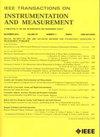Semisupervised Kernel Independent Component Analysis and Its Application for Fault Diagnosis
IF 5.6
2区 工程技术
Q1 ENGINEERING, ELECTRICAL & ELECTRONIC
IEEE Transactions on Instrumentation and Measurement
Pub Date : 2025-02-13
DOI:10.1109/TIM.2025.3541712
引用次数: 0
Abstract
Fault reconstruction, a common approach for fault diagnosis, involves extracting fault subspaces from measurement data and using them to identify the type of online fault samples. These subspaces, however, are often challenged by insufficient fault representation and weak discriminability among different fault types. To address these issues, a semisupervised kernel independent component analysis (SsKICA) algorithm is proposed and applied in fault diagnosis. First, an innovative feature extraction method is developed that considers both the non-Gaussianity and discriminability of the features in parallel. Its objective function is reformulated into a dual-maximization criterion function that incorporates the supervised information of sample categories and independence into the same mathematical frame. Second, Newton’s methods and fixed-point iteration are employed to derive iterative solutions for this dual-maximization function, and the convergence of these iterative solutions is analyzed. Third, a fine-grained fault subspace extraction method is investigated by extending fault reconstruction to the Hilbert space. Finally, a complete fault diagnosis strategy based on SsKICA is designed that can provide feedback for unseen faults and easily interpretable diagnostics. The simulation results, on the Tennessee Eastman process (TEP) and the PROcess Networks Optimization (PRONTO), demonstrate that the proposed method provides effective feedback mechanisms for unseen faults and enhanced diagnostic accuracy for known faults.求助全文
约1分钟内获得全文
求助全文
来源期刊

IEEE Transactions on Instrumentation and Measurement
工程技术-工程:电子与电气
CiteScore
9.00
自引率
23.20%
发文量
1294
审稿时长
3.9 months
期刊介绍:
Papers are sought that address innovative solutions to the development and use of electrical and electronic instruments and equipment to measure, monitor and/or record physical phenomena for the purpose of advancing measurement science, methods, functionality and applications. The scope of these papers may encompass: (1) theory, methodology, and practice of measurement; (2) design, development and evaluation of instrumentation and measurement systems and components used in generating, acquiring, conditioning and processing signals; (3) analysis, representation, display, and preservation of the information obtained from a set of measurements; and (4) scientific and technical support to establishment and maintenance of technical standards in the field of Instrumentation and Measurement.
 求助内容:
求助内容: 应助结果提醒方式:
应助结果提醒方式:


